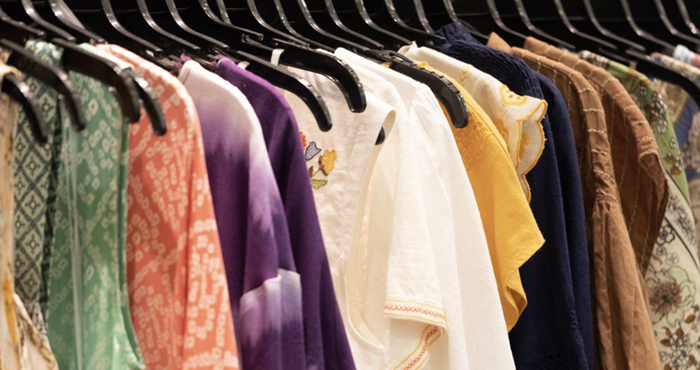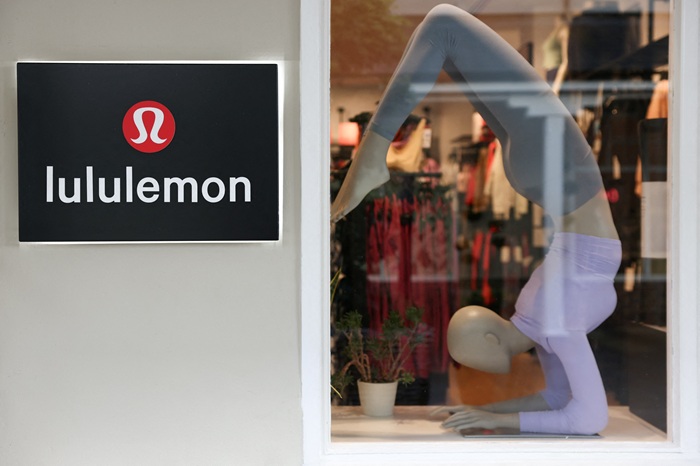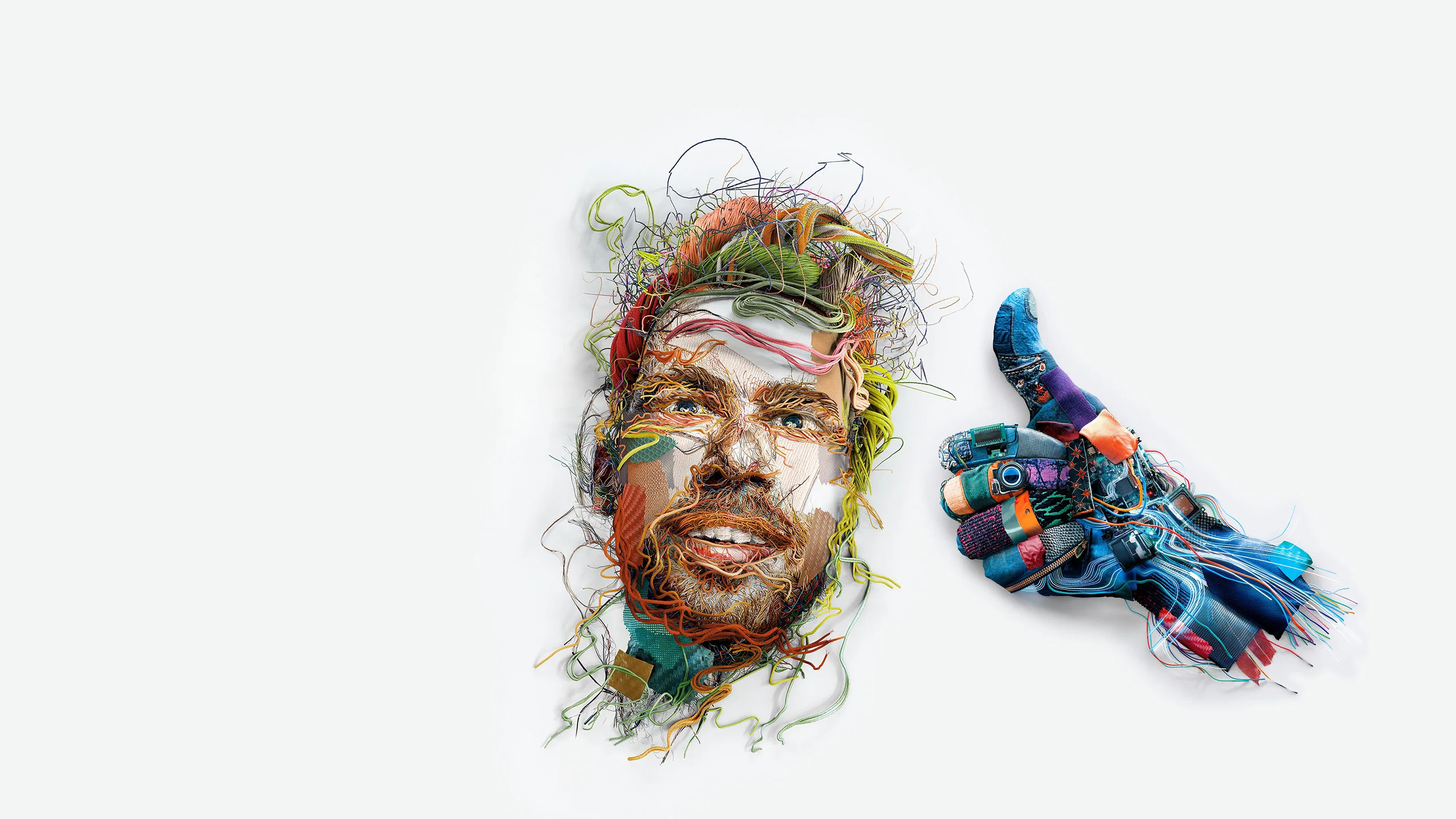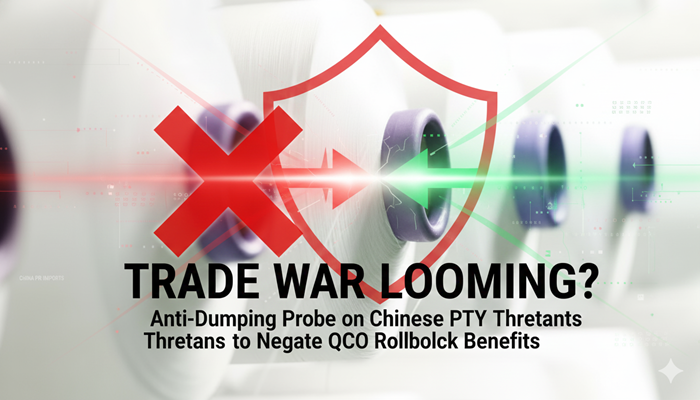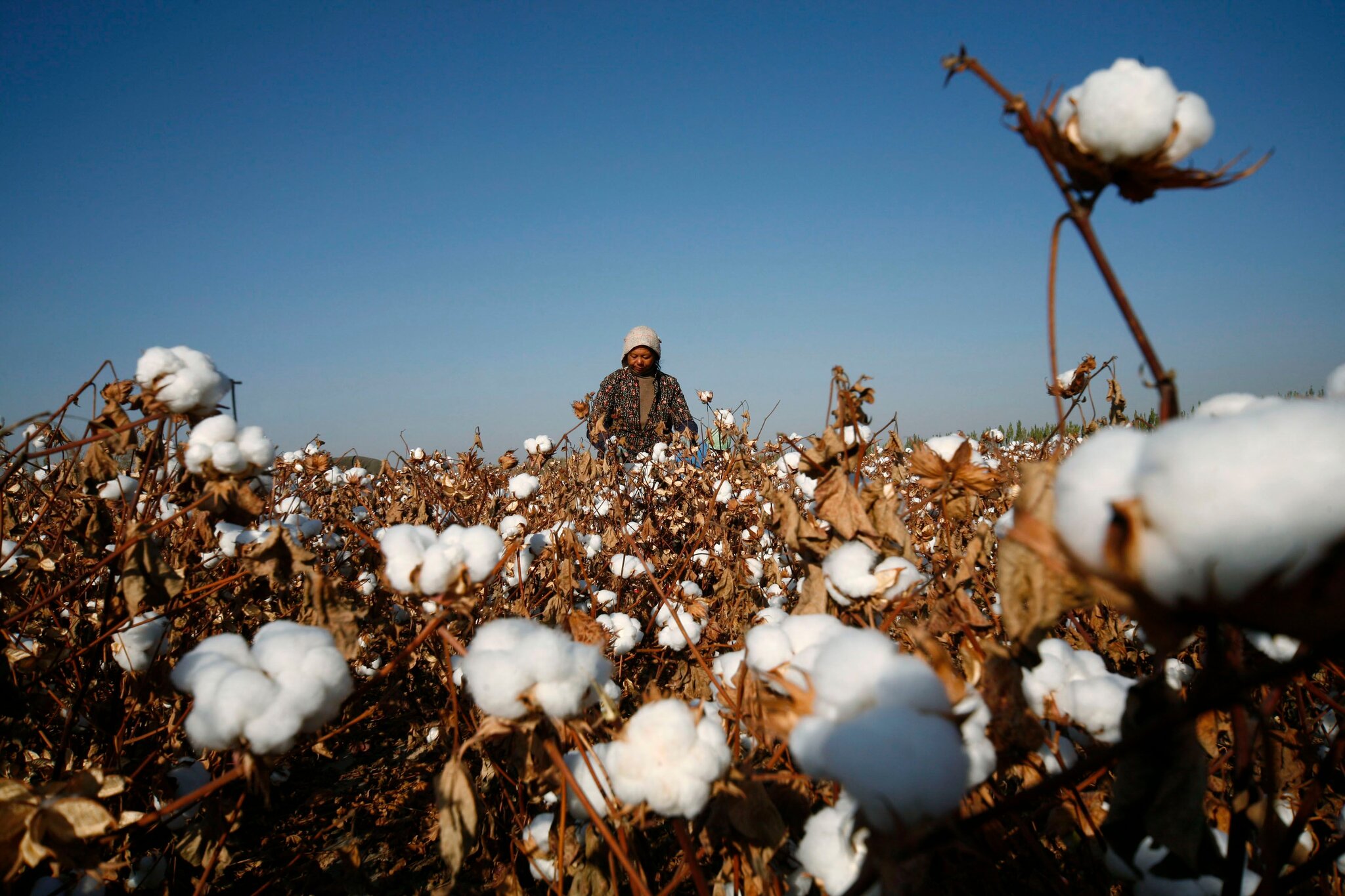FW

The fully-automated, double-sided air-jet spinning machine with 200 spinning units, up to 6 robots and a delivery speed of 500 m/min ensures economical and flexible production. The recently showcased J 26 automated air-jet spinning machine at ITMA + CITME 2016 has striking advantages among other air-jet spinning machines. The P 26 polyester attachment ensures 100 % polyester spinning with long running intervals without manual cleaning. High performance is supported by the piecing preparation system with reduced piecing time. The winding unit ensures optimal package build-up and therefore higher package weight. Technological innovations and adapted settings enable to produce soft Com4®jet yarns.
Spinning 100 % polyester
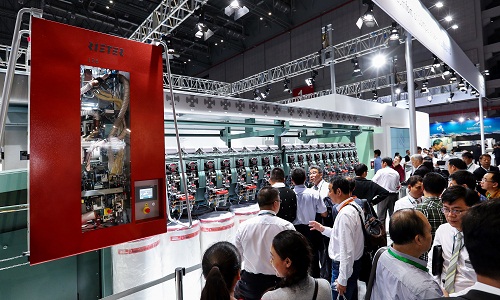
With the new P 26 attachment 100 per cent polyester can be spun on J 26. The P 26 system applies liquid to the fibres in front of the twisting zone. This liquid creates benefit for reducing polyester deposits on the technology components, prolonging production times with stable yarn quality, higher yarn strength, lower yarn hairiness, etc. The P 26 system is connected to tap water which is filtered so that no sediments can enter the system. The integrated Rieter clearer Q 10A checks the yarn quality. Special clearing channels monitor the P 26 system at each spin unit.
Rieter Q 10A yarn clearer
With 15 years of experience and 1 million of sensors in operation, Rieter is launching a yarn clearer specially designed for air jet spinning. Special clearing channel detecting very fast yarn surfaces changes caused by spin nozzle blockages. The detection is within 10 m and the fault can be removed easily. Unlike any other yarn clearing sensor, Q 10A provides a direct digital output out of the measurement. This guarantees maximum exactness in detecting yarn fault size, e.g. small but long yarn count deviations. Q 10A supports and monitors with a special channel the proper function of the new polyester attachment. The Q 10A detects smallest yarn deviations caused by malfunction of the attachment. A specially designed spectrogram helps to set individual limits for warnings and alarms and provides reliable detection and data to analyse the cause of periodic faults.
Produce yarn economically
High productivity in combination with other cost-saving concepts provides the lowest yarn manufacturing costs and highest margins for applications. With the same available floor space, output of the J 26 machine is up to 108 per cent higher and production margins up to 128 per cent higher compared to other air-jet spinn
The Indian spinning industry is faced with weak demand from overseas markets and poor yarn demand from the domestic garment sector. Growth in domestic yarn consumption stood at the lowest in four years during financial year ’16 (0.8 per cent for cotton spun yarn and 2.5 per cent for total spun yarn), and spun yarn production remained flat in the April to June quarter of financial year ’17 on a year-on-year basis.
So spinners will need to sacrifice profitability to maintain capacity utilization. Apart from profitability pressures, high cotton prices will translate into higher working capital requirements and hence borrowings and will translate into weaker credit metrics.
While industry profitability is expected to come under pressure, some of the stronger players, who had stocked cotton prior to the increase in cotton prices, may witness improved profitability driven by inventory gains during the second quarter of financial year 2017. The area under cotton cultivation is expected to decline for the second consecutive year by 12 per cent in 2017, following a seven per cent decline in 2016. Even a recovery in yields is unlikely to lift production. This is despite the good monsoons and high cotton prices.
The Pakistani textile sector has urged the government to take pragmatic steps towards exploring non-traditional markets to increase exports. According to the Pakistan Textile Exporters Association (PTEA), the commerce ministry has said in a paper that this was indeed the time to focus on non-traditional markets as huge opportunities are available. These non-traditional markets include South Africa, Australia, New Zealand, Korea, Japan, Taiwan, Mexico, Chile, Peru, Argentina, Cuba and Canada, stated the paper.
The recommendation comes as Pakistan’s exports take a sharp dive with the current account data for September showing the deficit increasing 13 per cent. Meanwhile, textile comprises of over half of the country’s total exports.The Association also urged the government to activate Pakistan’s trade missions abroad and rationalise activities and policies of the Trade Development Authority of Pakistan (TDAP) towards this direction so that the objectives could be achieved.
The Association has also recommended that frequent exchange of trade delegations to emerging markets would help enhance trade opportunities and explore new space for dwindling exports. It also notes that billions of rupees from the Export Development Fund (EDF) were being wasted on unproductive tours of government officials.
Committed to change, Invista, one of the world’s largest integrated producers of fibres and polymers and owner of the LYCRA® brand, has unveiled its 2017-2018 global intimate apparel , swimwear and athleisure trends and fashion directions that reinforce brand innovations and value benefits.
Invista and its Amsterdam-based forecasting agency Stijlinstituut have predicted the must-have trends for 2017/18 which were brought to life through an inspirational LYCRA® capsule collection featuring cutting-edge trends and technologies. With long-standing expertise revolutionising women’s wardrobes, the brand remains at the forefront of intimate apparel and swimwear innovations by presenting forward-thinking creative directions. The four trends highlight the rise in health, fitness and mindfulness as a lifestyle with the engaging motto ‘I am Every Woman.’
Detailing the innovations, Claire O’Neill, Intimate Apparel & Swimwear Marketing Segment Manager at Invista said her company presents a great variety of trends for Intimate Apparel and Swimwear because wearers come in vast numbers each one with their own lifestyle and multifaceted personality, adapting to constantly changing environments. It is the versatility of Invista fibres that enables and facilitates these dynamics by offering flexible and performing wardrobes to suit every woman and her various wants. The addition of the Athleisure platform reflects an exciting opportunity for intimates and body wear brands to expand their business.
Invista fashion directions has become a recognised source of inspiration underpinned by sound technical innovation. It creates value for brands and retailers and supporting partner mills of Invista with valuable trend insights, innovation and new business opportunities.
High cotton prices, low consumption growth and weak export prospects entangle spinning industry. As per a research by ICRA, the independent and professional investment information and credit rating agency, cotton availability in the country is likely to remain tight in 2017 while prices would remain higher on a y-o-y basis during FY2017.
Historically, high cotton price has not benefited the cotton spinning industry as it impacts demand, reduces competitiveness, and increases risk of inventory losses besides resulting in need for higher funding requirements. Given the tight opening stock position and unlikely increase in cotton crop size, cotton export levels will determine the domestic cotton availability and prices in H1 FY18. The pressure on yarn exports and tepid domestic consumption remain a challenge for the Indian spinning industry.
During FY16, growth in domestic yarn consumption stood at the lowest in four years (0.8 per cent for cotton spun yarn and 2.5 per cent for total spun yarn) while the spun yarn production remained flat in Q1 FY17 a y-o-y basis. Given the lukewarm domestic consumption and weak prospects of textile exports, demand for yarn is unlikely to get any support. Thus, spinners will need to sacrifice profitability to maintain capacity utilisation.
Commenting on the financial health of Indian spinning industry, ICRA stated that apart from profitability pressures, high cotton prices will translate into higher working capital requirements and hence, borrowings and will translate into weaker credit metrics. ICRA cuts the outlook of Indian cotton spinning industry from stable to negative.
While profitability is expected to come under pressure, ICRA notes that some of the stronger players, who had stocked cotton prior to increase in cotton prices, may witness improved profitability driven by inventory gains during Q2 FY2017. This is definitely a negative sign, it is believed.
Made-ups and home textile segment in the country would be covered under the Rs 6,000-crores special package that was recently approved for the garment sector. Hinting this, Union Minister of Textiles Smriti Irani has said that her Ministry was actively considering extending the benefits of special package to made-ups and home textile segment which had been excluded from its ambit. The minister further said that an announcement for the same is likely to be made around Diwali. She said this in her address after presenting Texprocil Awards at Mumbai.
The made-ups and home textile segment is equally, if not more, labour intensive than the apparel sector and has the capability of generating sizeable new employment. At the same time, it will act as a pull factor for increased consumption of fibre, yarns and fabric produced domestically, she added. The minster appreciated the industry's efforts to remain leading exporter and assured all help to it.
Earlier, R K Dalmia, Chairman of The Cotton Textiles Export Promotion Council (Texprocil), said the special package of Rs 6,000 crore for the apparel sector was a step in the right direction given the current scenario of world trade and international competitiveness. The reimbursements of State and Central levies along with labour reforms will strengthen the textile sector by improving its cost competitiveness in the global market, he stated. Considering that textile is a low margin industry, introduction of such packages can lead to an exponential leap in export performance. This can be seen from the fact that in September this year, export of garments showed a 12 per cent increase amid a downward trend in most other sectors, he added.
Chinese garment manufacturer to open new factory in Arkansas Chinese garment manufacturer Suzhou Tianyuan Garments which supllies to Adidas, Reebok and Armani brands will shortly open a factory in Arkansas that would create as many as 400 jobs. The state has signed a MoU with the company regarding. The manufacturer will invest $20 million in its Arkansas location that would most likely be in Little Rock. The job workers would be paid an average wage of $14 per hour.
The state's deal with the company calls for a $1 million infrastructure assistance grant. This would be $500,000 that would be used for training purposes and an estimated $1.6 million in rebates based on the company's annual payroll.
"The recently concluded Intertextile Shanghai Apparel Fabrics-Autumn Edition 2016 received praises from participants and visitors alike on the quality and internationality of the fair’s 22nd edition. After years of consecutive growth in the number of exhibitors, the 2016 show concluded similar in size as last year.
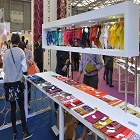
The recently concluded Intertextile Shanghai Apparel Fabrics-Autumn Edition 2016 received praises from participants and visitors alike on the quality and internationality of the fair’s 22nd edition. After years of consecutive growth in the number of exhibitors, the 2016 show concluded similar in size as last year. The 4,553 exhibitors from 29 countries & regions (2015: 4,642, 29 countries & regions) at this year’s fair attracted over 73,000 buyers from 90 countries and regions (2015: 66,256, 97 countries and regions), a roughly 10 per cent increase and a number, which includes those registered for concurrent Yarn Expo Autumn, PH Value and CHIC fairs, and attended Intertextile Shanghai as well. The gross area of the fair grew slightly to 260,000 sq mt (2015: 228,000).
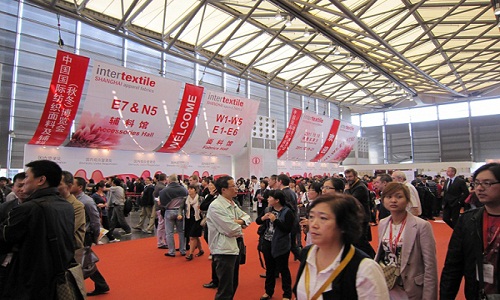
“For the last few years, even though Intertextile Shanghai has continued to grow in size, our priority has been to focus on the quality of exhibitors and buyers that participate here to ensure it remains the global industry’s leading business event every March and October,” says Wendy Wen, Senior General Manager of Messe Frankfurt (HK) said at the conclusion of the show. “While we are aware that the current economic conditions are creating challenges in some sectors of the industry, we are confident that with the unrivalled range, internationality and quality of exhibitors here, this fair is increasingly viewed as the leading event where quality trade buyers come to conduct business, regardless of the prevailing economic conditions.”
Exhibitors, visitors return satisfied
Both new and returning exhibitors reflected this sentiment, including Third Office from Japan, a first-time participant in the fair’s Beyond Denim area. “During the fair, we met many high-quality buyers,” John Xu from the company’s Fabric Department explained. “Our priority is not the quantity of the buyers but the quality, so Intertextile Shanghai is a very effective trade platform for this, and it’s definitely the most influential one in Asia.” Xu also touched on the fair’s global nature. “Being in the high-potential Chinese market, Intertextile Shanghai creates a lot of valuable new business opportunities that other fairs cannot. Apart from local buyers, we also had visitors from the buying offices of overseas brands and manufacturers, and even from an existing customer from Japan who placed an order on the spot!”
Long-term exhibitors and leading industry brands such as DuPont also use the fair as a platform to connect with the industry. “Intertextile has been an important platform for us in the Asia Pacific region for a number of years. As we expand more into wearable technology area, this will be the best place for us to reach out and to connect with the market,” said Gordon Tseng, AP Regional Business Development Manager, Wearable Segment, DuPont Photovoltaic & Advance Materials.
While exhibitors appreciated the diversity and quality of buyers to the fair, conversely these same buyers valued Intertextile Shanghai for the ability to find quality exhibitors covering the entire supply chain under one roof. “Every time we come to this fair, we find old suppliers we have had success with, and new vendors as well. The quality of these suppliers is what brings us back again and again,” commented Dustin Rhodes from Pro Look Sports, US. Italian buyer Salvatore Parasuco, President & Creative Director of Parasuco Jeans says “We come to this show because we can see a lot of what’s available from China as well as many other countries. You can find a lot of interesting products and meet a lot of good vendors here. And through the various country pavilions here, we get to see what’s going on around the world. We can do a lot of research in this one place and accomplish a lot here.”
Intertextile Shanghai Apparel Fabrics – Autumn Edition 2016 was co-organised by Messe Frankfurt (HK) Ltd; the Sub-Council of Textile Industry, CCPIT and the China Textile Information Centre. The next Intertextile Shanghai Apparel Fabrics will be the Spring Edition from March 15 – 17, 2017.
"With around 130 Italian companies participating in ITMA ASIA + CITME 2016 has opened a plethora of opportunities for exhibitors and visitors in terms of tech exchange and innovative capabilities. Spread across 5,400 sq. mt, Italian companies are exhibiting as a part of the National Sector Group, organised by ACIMIT (the Association of Italian Textile Machinery Manufacturers) and ICE-Italian Trade Agency. The four Italian clusters are in the spinning and winding (Hall 1), nonwovens (Hall 2), digital printing (Hall 5) and finishing machinery areas (Hall 6)."
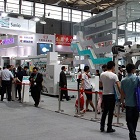
With around 130 Italian companies participating in ITMA ASIA + CITME 2016 has opened a plethora of opportunities for exhibitors and visitors in terms of tech exchange and innovative capabilities. Spread across 5,400 sq. mt, Italian companies are exhibiting as a part of the National Sector Group, organised by ACIMIT (the Association of Italian Textile Machinery Manufacturers) and ICE-Italian Trade Agency. The four Italian clusters are in the spinning and winding (Hall 1), nonwovens (Hall 2), digital printing (Hall 5) and finishing machinery areas (Hall 6).
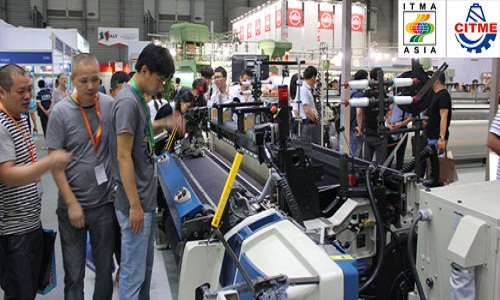
The high number of Italian exhibitors testified a positive outlook on the future of Asian markets, and China in particular. Asia is one of the most crucial markets for Italian textile machinery manufacturers, capturing around 45 per cent of their sales abroad. “The high number of Italian exhibitors in Shanghai shows that our companies are confident in a further growth of the Asian markets, and China in particular. Compared to the last edition of ITMA ASIA, the space booked by Italian exhibitors has grown by 13 per cent,” saysRaffaella Carabelli, President, ACIMIT.
Betting big on China
The Chinese market is the prime destination for Italian exports. In the first half of 2016, the value of Italian machinery exported to China totaled €152 million (+11 per cent over the previous year), around 17 per cent of Italian total exports. The other main destinations of the area for Italian companies are India, Bangladesh, and Pakistan. The demand for machinery in Asia focusses mainly on machines capable of combining savings in production costs with respect to environmental issues. “Visitors at ITMA ASIA + CITME will once again be able to ascertain in person the extremely high quality and uniquely innovative character of Italian technology on display”, states Raffaella Carabelli. “Less than a year from ITMA Milan, Italian machinery manufacturers will be present in Shanghai with further proposals, aimed at providing rigorous production standards while cutting costs for energy, water, chemical products and other raw materials.”
Sustainable technologies at the fore
Around 40 Italian machinery manufacturers have signed up to ACIMIT’s ‘Sustainable technologies’ project, committing themselves to supplying increasingly sustainable machinery, both from an economic and environmental standpoint. The project is an initiative supported by the Ministry of Economic Development and by the ICE-Italian Trade Agency and is documented on the new website www.green-label.it, which was presented during the ACIMIT press conference at ITMA ASIA. “A website is an additional tool made available to textile operators, aimed at providing a better understanding of what we want to achieve in terms of sustainability,” comments ACIMIT’s President.
In addition to the 40 companies, other Italian exhibitors at ITMA ASIA are also displaying the progress made by their technology concerning cost reduction and production resource savings to visitors of the most important show in the sector in Asia, confirming Italian industry at the top for the supply of sustainable processes.
Asia, the growth market
ACIMIT brings together majority of Italian textile machinery companies (which account for 80 per cent of Italy’s turnover), has been organising active promotional program in Asia, to support the associated companies in their sales efforts. This program is run in cooperation with ICE-Italian Trade Agency.
Italy, with its high-tech and eco-friendly manufacturers, is one of the most important player in the textile machinery industry. “Italian high-quality machines will foster China textile industry’s quality and will provide environmental conservation,” explains Claudio Pasqualucci, Italian Trade Commissioner in Shanghai. China is implementing policies for the reduction of carbon emissions. “The new measures for low carbon economy are: low energy consumption, low material consumption, low-emission and low-pollution, one of the future choices in the economic development. For that reason, we think Italian textile machines eco-friendly technology, should be appropriate with Chinese policies.
China-based Andritz Wuxi Nonwoven Technology offers the full range of services including pilot plant and test stands for customer test trials. The Andritz facility hosts a state-of-the-art needle punch line on an industrial scale, including the A.30 aXcess needle loom, which is available with a down-stroke and an up-stroke set-up. This is particularly suitable for high-quality pre-needling when processing automotive felt, filtration, and geo textile applications at proven industrial speeds of up to 1,200 rpm, with working widths of up to six meters.
The roll service center comprises state-of-the-art grinding equipment and a test stand for various kinds of rolls up to one meter in diameter and 10 meters in length. The test stand enables a performance check on roll parameters, such as line force, speed, and temperature, under production conditions. All roll types can be repaired, reconditioned, and upgraded at the Andritz service center.
Andritz Nonwoven provides reliable solutions in all nonwovens segments, from hygiene to geo textiles, coating substrates, filtration, or automotive applications. The Andritz Nonwoven aXcess portfolio includes lines and individual machines for needle punch, spun lace, and calendaring processes, making it the ideal product for entering the nonwoven market. With one roll in production and one roll in stand-by position, the three-roll calendar offers the highest flexibility in the medium-capacity nonwovens market.



